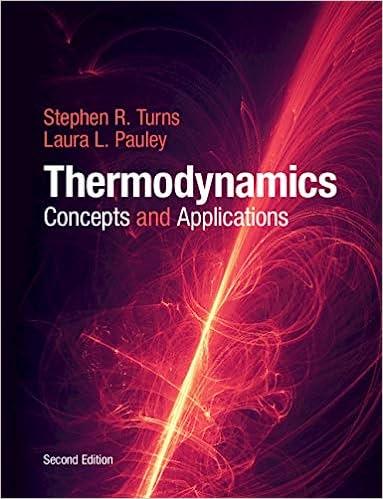Answered step by step
Verified Expert Solution
Question
1 Approved Answer
At temperature 2 9 3 K , the surface tension liquid water / air is 0 . 0 7 2 7 5 J / m
At temperature K the surface tension liquid water air is Jm
a Compare the surface energy of liquid water droplets dispersed in air at this
temperature, with droplet diameters mu m nm nm
b Consider the density of liquid water at this temperature is kgL calculate
the total surface energy in a system containing kg liquid water dispersed in
air as droplets with a single diameter nm Recalculate for a single diameter
nm and nm respectively. Compare the resulting values.
c Consider these systems are contained in vessels of the same size, under the
same conditions. Try to compare comment on the dynamic properties of the
individual liquid water droplets, and the sedimentation processes in these
vessels.
d Merge systems above and try to describe the new one. Try to comment on
the applicability of mathematic formulae from colloid chemistry to this new
system.
Problem : The following data refer to the adsorption of the redmauve dye
from beetroot juice on porcelain at o C
Equil. Conc. C mmol.dm
Adsorb. Amount n nmol
Show that the data obey the Langmuir adsorption isotherm.
Demonstrate that times mol of dye adsorb to form a monolayer.
Estimate the area of a single dye molecule if the radius of a plate was
cm we assume the formation of a complete monolayer
Problem : Given the saturated vapor pressure of N gas over pure liquid N at
temperature K is kPa. Based on the experimental data obtained from
sorption of N at this temperature onto a solid adsorbent in the following table,
equil. P N kPa
Adsorb. V mm
The values for adsorbed volumes are already corrected to K atm, and
referred to g adsorbent.
Construct the corresponding BET equation
Find the specific surface area of this adsorbent, given the effective cross
section of N molecule is nm
Problem : Given references considered monodispersed of a
macromolecular compound with their nominal mole masses kDamol
kDamol kDamol and kDamol respectively. Mix these references
with the weight ratio ::: correspondingly. Find the numberaverage and the
weightaverage mole mass of the macromolecular compound in this mixed
sample.
Problem : Find comment on the relation between the weightaverage and
numberaverage mole mass of a macromolecular compound with the
corresponding mean values molecule sizes of this macromolecular
compound in a liquid solution.
Step by Step Solution
There are 3 Steps involved in it
Step: 1

Get Instant Access to Expert-Tailored Solutions
See step-by-step solutions with expert insights and AI powered tools for academic success
Step: 2

Step: 3

Ace Your Homework with AI
Get the answers you need in no time with our AI-driven, step-by-step assistance
Get Started


